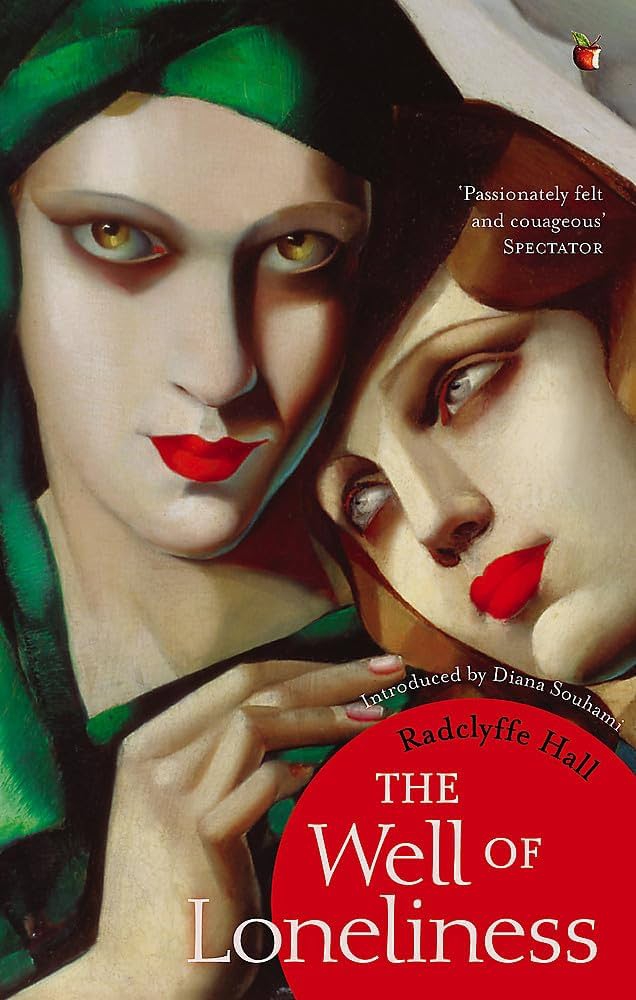The Well of Loneliness
Radclyffe Hall
First published in 1928, this timeless portrayal of lesbian love is now a classic. The thinly disguised story of Hall’s own life, it was banned outright upon publication and almost ruined her literary career.
—
**Storyline Summary**
‘The Well of Loneliness’ (1928) follows the life of Stephen Gordon, a woman who identifies as an ‘invert’ (the term used at the time for homosexuality). The novel traces Stephen’s life from birth to adulthood:
Born to wealthy parents in England, Stephen’s father had desperately wanted a son and names her Stephen
From childhood, Stephen feels different, preferring ‘masculine’ activities and clothing
She falls in love with a neighbor, Angela Crossby, who ultimately betrays her
After being rejected by her mother following the discovery of her sexuality, Stephen leaves her ancestral home
She moves to London, then Paris, where she finds community among other ‘inverts’
During World War I, Stephen serves as an ambulance driver
She meets and falls deeply in love with Mary Llewellyn
Though they build a life together in Paris, Stephen ultimately sacrifices her relationship with Mary, believing Mary would have a better life with a man
The novel ends with Stephen’s heartbreaking decision to push Mary away, leaving herself alone with her ‘masculinity’ and suffering
**Literary Significance**
One of the first mainstream novels to portray lesbian experience openly and sympathetically
Challenged the literary silence around female homosexuality during a time when such content was heavily censored
Created space for lesbian existence in literature despite its sometimes problematic portrayals
Established a tradition of lesbian literature that later authors could build upon and respond to
Demonstrates early attempts to articulate lesbian identity in an era before modern LGBTQ+ terminology
**Cultural and Historical Impact**
Censorship and Obscenity Trial: The book was famously banned in the UK immediately after publication in 1928 for ‘obscene libel.’ The resulting obscenity trial brought unprecedented public attention to lesbianism.
Visibility: Despite (or because of) the ban, it made lesbianism visible in public discourse at a time when it was largely unacknowledged
Community Formation: The book became a way for isolated lesbians to recognize themselves and each other
Identity Validation: For many women attracted to other women, it provided the first recognition that they were not alone
Mixed Legacy: The novel’s portrayal of lesbians through the lens of ‘sexual inversion’ theory (the idea that lesbians were essentially male souls in female bodies) is considered outdated and problematic today, yet the emotional truth of the story resonated regardless
**Political Significance**
The censorship battle became an early flashpoint in the fight for gay and lesbian rights
Positioned lesbian existence as political by asserting the right to depict lesbian lives in literature
Virginia Woolf, E.M. Forster, and other prominent writers defended the book, linking lesbian representation to broader literary freedom
**The Complex Legacy**
Writing in The Times newspaper in 2008, author Jeanette Winterson didn’t mince her words,ÿdeclaring thatÿ’The Well of Loneliness is one of the worst books yet written’.
Professor Laura Doan, co-editor ofÿ’Palatable Poison: Critical Perspectives on The Well of Loneliness,’ told BBC Culture, ‘In a way, the function of The Well of Loneliness is to convince you that lesbianism matters ? lesbianism matters so much that the government can ban us and silence us, and that works very well to put you on the cultural map.’
In recent years, though, conversation around the novel has been reignited by new debates. This time, the controversy centers less on the book?s content itself and more on how it is interpreted through the lens of 21st-century gender identity politics. A woman who dresses in men’s clothing, adopts a male name, and is portrayed as ‘midway between the sexes’?could it be that one of the world’s most iconic lesbian novels has actually been a trans novel all along?
Details
| ISBN: |
| Genre: Fiction |
| Subject: |
| Publication Date: 1982 |
| Publisher: Virago Press |
| Language: |
| Format: Paperback |
| Rating: |
| Notes: |
| Book_ID: 258207 |

